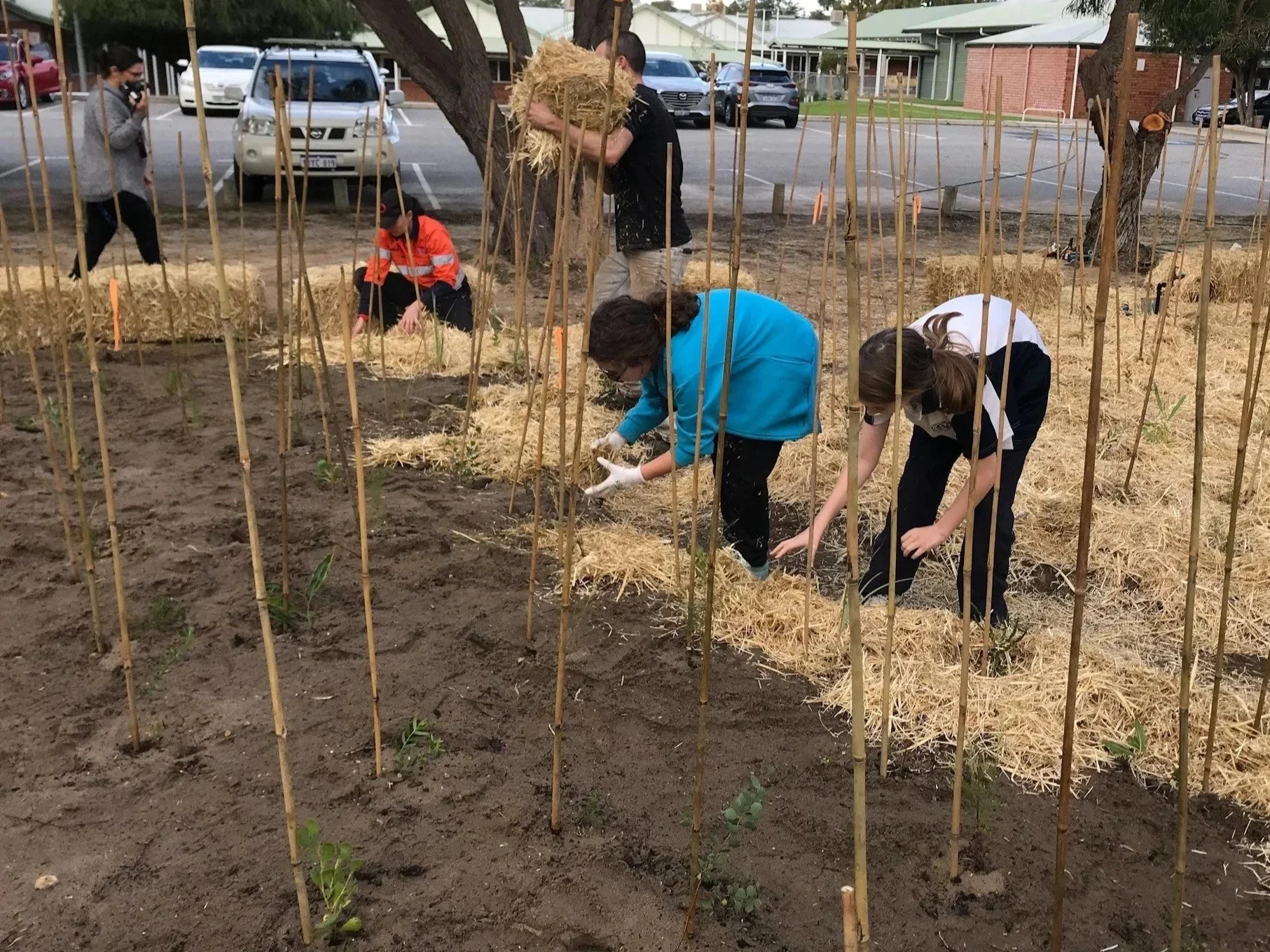
Miyawaki Forests
What are Miyawaki forests?
Miyawaki forests, also known as pocket forests, tiny forests or micro forests, are the brain child of Japanese botanist Professor Akira Miyawaki. The methodology was further refined by engineer turned forest maker Shubhendu Sharma from Afforestt.
The program has built upon the learnings of Miyawaki and Sharma and adapted the Miyawaki methodology to suit Australia’s unique environment.
Miyawaki forests are densely planted (3-5 plants per m2) and comprised of locally native climax plant species. Prior to planting, soil undergoes intensive remediation to restore nutrients, and importantly, reinvigorate soil microbial life.
The Miyawaki Method
Site selection and soil survey
Forests should be planted in an appropriate location. Ideal locations are unused grassed areas or where paving can be removed to assist with cooling the local environment. It is important to ensure that any underground services will not be impacted by forest making activities.
Soils are tested at the proposed forest site to determine the soil type and nutrient content. This is important for ensuring the soil remediation process is tailored to the specific soil site requirements.
Botanical survey
Miyawaki forests are comprised of locally native species identified through a botanic survey of local remnant forest or bushland area. Basically, what would have been growing on the proposed forest site before it was cleared for urbanisation.
The botanical survey provides information to ensure that the Miyawaki forest is composed of the correct native plant species and the appropriate composition to reflect the natural system. This is called the Potential Natural Vegetation for the site.
Soil remediation
An important part of the Miyawaki method is the intensive soil remediation. Soil remediation is required as soils in urban areas are often contaminated, contain limited microbial activity and can be compacted.
Soil remediation occurs to a depth of up to 1 m and includes addition of organic materials and compost tea to add nutrients, bringing life back into the soils. This creates ideal conditions for plant growth and will promote strong biodiverse systems. The amount of organic material added to the soil is tailored to the soil type and nutrient content. Soil type is determined by soil testing at the proposed site.
Planting the forest
Planting the pocket forest is an exciting time. People come together to experience the joy of planting and the knowledge that our efforts will make a tangible difference to the environment.
The plants are planted at high density, 3 to 5 plants per metre squared, unlike traditional planting (approximately 1 to 1.5 plants per square metre).
Forest mulching
Mulching is an essential part of the Miyawaki method. Mulch insulates the soil and helps retain soil moisture, protecting soil microorganisms and plant root systems. Typically forest makers use straw or wood chips.





